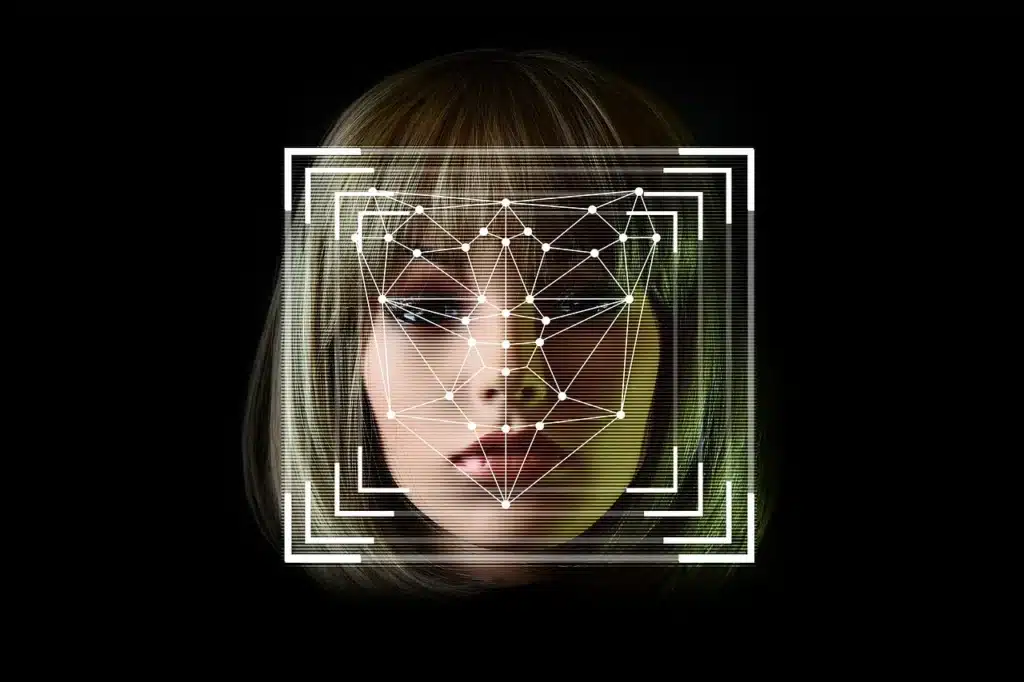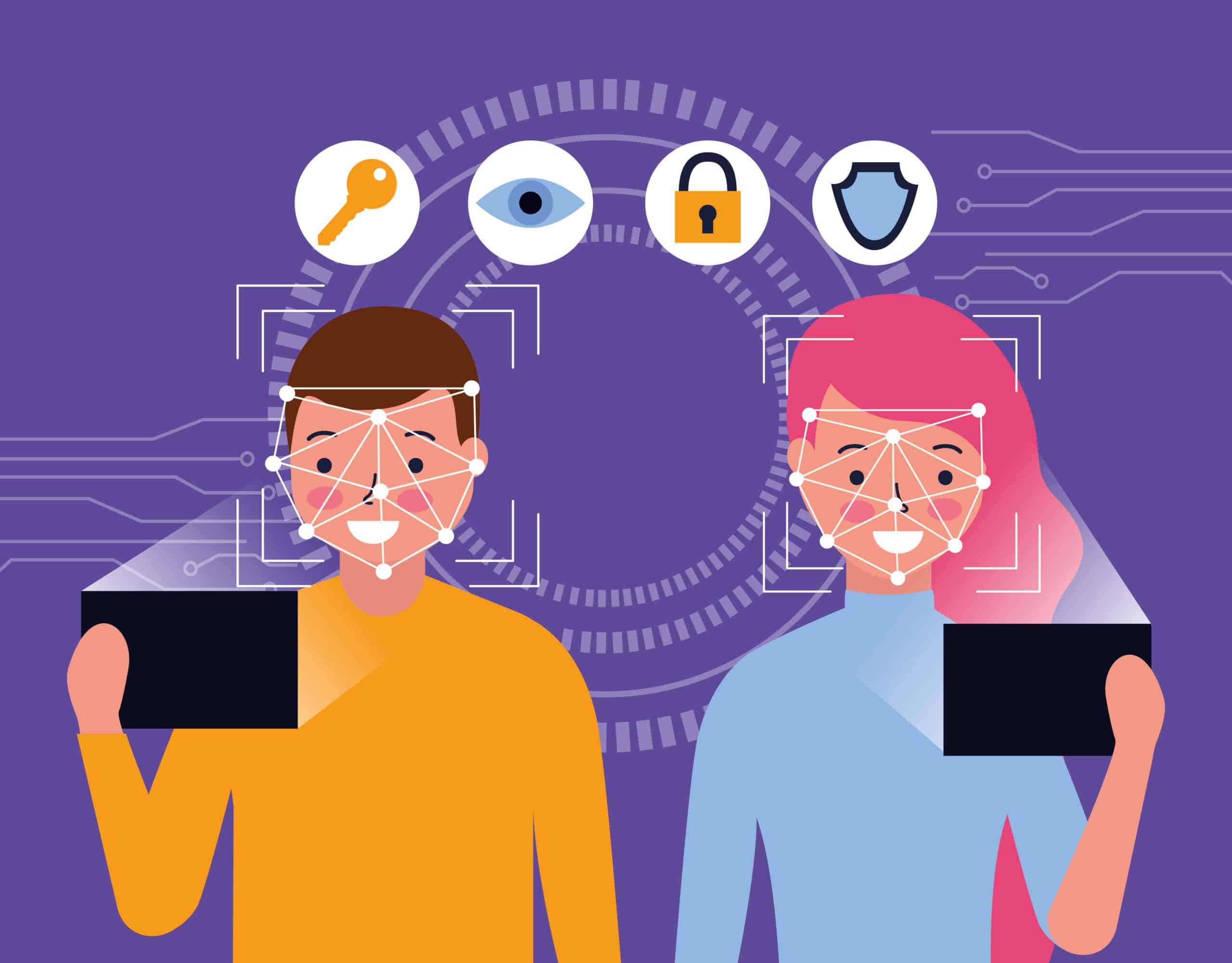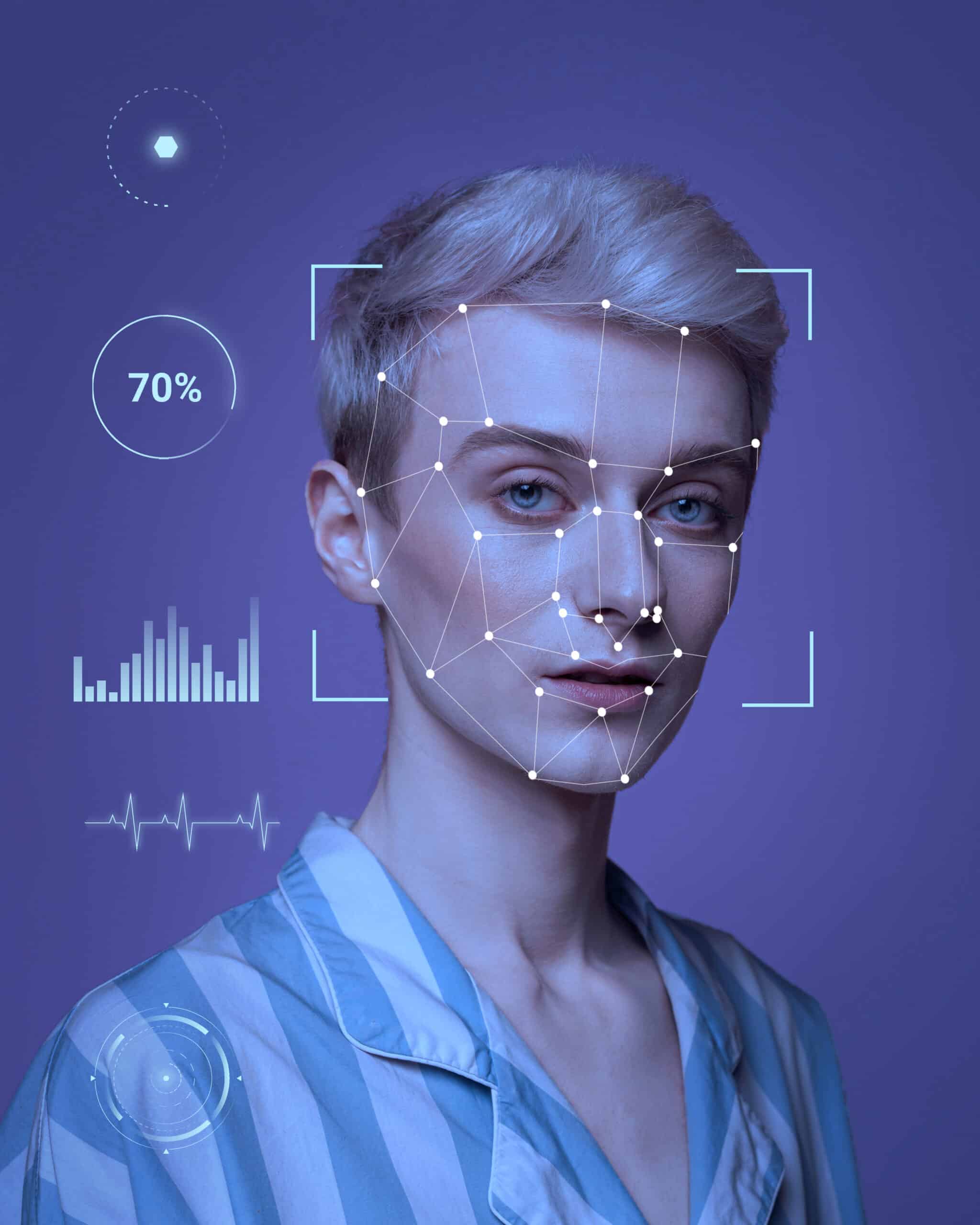Unlocking the Benefits of Facial Recognition Identity Management


Facial recognition technology has revolutionized identity verification processes, offering enhanced security, efficiency, and user convenience. From its early development to advanced facial analysis and matching techniques, this article explores the evolution of facial recognition technology.
Discover the benefits of facial recognition in identity management, such as preventing fraud and streamlining customer onboarding. Controversies surrounding privacy, biases, and misuse by authorities raise concerns.
Additionally, learn best practices for implementing facial recognition identity verification, including transparency, regular audits, and collaboration with experts.
What Is Facial Recognition Identity Verification?
Facial Recognition Identity Verification is a cutting-edge technology that leverages biometric features to authenticate individuals securely.
By analyzing unique facial features such as the distance between eyes, nose shape, and jawline, facial recognition significantly enhances security measures by providing an additional layer of identity authentication. Also, this technology has revolutionized traditional methods of identification, reducing the risk of fraudulent activities and unauthorized access.
The utilization of facial recognition in various industries, including banking, healthcare, and law enforcement, has streamlined processes and improved overall operational efficiency. The ability of facial recognition to quickly and accurately verify identities not only enhances security protocols but also offers a seamless and convenient user experience.
The History and Evolution of Facial Recognition Technology
The history and evolution of Facial Recognition Technology traces back to early innovations in artificial intelligence and data protection.
As technology progressed, facial recognition systems became more sophisticated, relying heavily on AI algorithms to analyze and identify facial features with higher accuracy. Over time, advancements in machine learning and neural networks have enabled these systems to adapt and learn from patterns, enhancing their overall performance.
The emphasis on data protection has led to the development of stringent measures ensuring the privacy and security of individuals’ personal information when utilizing facial recognition technology. As a result, the evolution of this technology continues to be influenced by the dual pillars of AI innovation and data security.
Early Development of Facial Recognition
The early development of Facial Recognition technology involved pioneering efforts to capture and analyze biometric data with a focus on system accuracy.
As technology progressed, early methods for data collection included capturing facial features such as the distance between eyes, nose, and mouth, along with skin texture and color. These initial systems often faced challenges with accuracy and speed, requiring continuous improvements.
Researchers started incorporating machine learning algorithms to enhance recognition capabilities, leading to more sophisticated systems that could identify individuals with higher accuracy rates. This marked the transition towards advanced facial recognition technology that could be used for various applications, from security purposes to unlocking devices with a simple glance.
Advancements in Facial Recognition Technology
Advancements in Facial Recognition Technology have been propelled by the integration of machine learning algorithms to enhance facial biometrics and ensure secure access for identity security.
This integration has led to significant improvements in the accuracy and efficiency of facial recognition systems. Machine learning algorithms have enabled the development of sophisticated facial biometric models that can identify individuals with greater precision. These advancements have paved the way for the implementation of robust secure access protocols, ensuring that only authorized users can gain entry. As a result, maintaining strong identity security measures has become more achievable, offering enhanced protection against unauthorized access and potential security breaches.
How Does Facial Recognition Identity Verification Work?
Facial Recognition Identity Verification operates through a process of facial detection, analysis, and matching to validate identities and recognize users effectively.
- Once a person’s face is detected by the system, the software will analyze various facial features such as the distance between eyes, nose shape, and unique patterns. This biometric data is then converted into a mathematical template to create a digital representation of the face.
- Next, sophisticated matching algorithms compare this template with stored templates in the database to find a match.
Accuracy is crucial in this process to ensure precise identity validation and secure user recognition, making facial recognition technology a valuable tool in enhancing security measures across various industries.
Facial Detection
Facial Detection involves capturing and analyzing distinct facial features using advanced technology and specialized facial recognition software.
The process of facial detection begins with acquiring an image or video containing a human face, followed by identifying key facial landmarks such as eyes, nose, mouth, and chin. These unique features are then analyzed using complex algorithms to create a digital representation of the face, often referred to as a facial signature. Technological aspects like machine learning and artificial intelligence play a crucial role in accurately matching these facial signatures with existing databases for identification purposes. Face recognition systems utilize this technology to enhance security measures, streamline access control, and provide personalized user experiences.
Facial Analysis
Facial Analysis encompasses the evaluation of facial data to generate precise recognition algorithms that prioritize data protection and identity security in the digital realm.
This critical phase plays a key role in ensuring the development of accurate biometric recognition systems that can effectively distinguish one individual from another based on their unique facial features. By focusing on refining algorithms that analyze facial characteristics with high precision, advancements in technology are paving the way for more secure authentication processes. Stringent data protection measures are being implemented to safeguard sensitive facial data and uphold the integrity of individuals’ digital identities in the era of facial recognition technology.
Facial Matching
Facial Matching involves comparing detected facial patterns with stored data to ensure secure authentication, prevent identity theft, and enhance fraud prevention through advanced facial recognition tools.
This process entails capturing facial images through devices like cameras or smartphones, extracting facial features such as distance between eyes, shape of the nose, and size of the mouth, and then converting these features into digital representations. The facial recognition algorithm then analyzes these unique characteristics to verify the individual’s identity. By leveraging cutting-edge technology, facial matching has become a crucial method for organizations to strengthen security measures and combat potential risks of unauthorized access or fraudulent activities.
The Benefits of Facial Recognition Identity Verification
Facial Recognition Identity Verification offers a myriad of benefits, including secure transactions, enhanced security measures, and efficient identity verification solutions through advanced facial recognition systems.
By incorporating facial recognition in identity verification, users can enjoy a seamless and hassle-free transaction experience as they no longer need to remember complex passwords or carry physical cards. The heightened security protocols provided by facial recognition technology significantly reduce the risks associated with identity theft and unauthorized access.
The robust identity verification solutions powered by facial recognition systems not only enhance user experience but also strengthen overall security measures, making it a preferred choice for industries requiring top-tier identity authentication.
Enhanced Security
Enhanced Security is a key benefit of facial recognition, ensuring robust identity security, biometric security measures, and secure identity verification processes that underscore the advantages of facial recognition technology.
By incorporating facial recognition into security systems, organizations can strengthen access control by creating a more personalized and secure environment. The ability to accurately identify individuals through facial biometrics adds an extra layer of protection against unauthorized access, reducing the risks associated with traditional password-based systems.
This advanced technology not only enhances security protocols but also streamlines identity verification processes, making it more convenient and efficient for users. Facial recognition offers a seamless and reliable method for establishing and verifying identities, ultimately leading to a more secure and trusted environment for individuals and organizations alike.
Improved Efficiency
Improved Efficiency is a hallmark of facial recognition technology, offering streamlined identity verification benefits, efficient solutions, and secure identity verification services that optimize operational processes.
This technology not only speeds up identity verification processes but also enhances security measures, reducing the risk of unauthorized access. The advanced facial recognition systems can handle large volumes of identifications quickly, making them ideal for businesses seeking operational enhancements. The accuracy and reliability of these solutions contribute to smoother workflows and increased productivity. Secure identity verification services provided by facial recognition technology can minimize errors and fraudulent activities, ensuring a trustworthy and efficient operational environment.
User Convenience
User Convenience is paramount in facial recognition, offering seamless user recognition, intuitive facial recognition tools, digital verification options, and personalized identification services that prioritize user experience.
By employing facial recognition technology, users can easily access their devices, secure private information, and make secure transactions with just a quick scan of their unique facial features. The innovative facial recognition tools continually adapt and improve to enhance accuracy and security measures, ensuring a reliable user identification process. Digital verification methods, such as facial unlock features, provide a secure and convenient way for users to access their devices while personalizing their identification process to suit their preferences.
The Role of Facial Recognition Identity Verification in Identity Management
Facial Recognition Identity Verification plays a pivotal role in identity management, enabling proactive identity fraud detection, biometric identification, and secure identity management solutions for comprehensive identity verification.
These advanced facial recognition technologies have revolutionized identity management practices by providing a highly secure and efficient means of verifying individuals’ identities. By analyzing unique facial features, such as the distance between eyes or the shape of the nose, facial recognition can accurately identify and authenticate individuals, making it a powerful tool for fraud detection.
The continuous advancements in biometric identification have further enhanced the accuracy and reliability of facial recognition systems, offering a reliable method for verifying identities in various sectors. Secure identity management solutions leverage these capabilities to ensure robust identity verification processes that are crucial in enhancing security measures across different industries.
Preventing Fraud and Identity Theft
Preventing Fraud and Identity Theft is a critical function of facial recognition, safeguarding identity protection, enhancing fraud prevention measures, ensuring secure authentication, and verifying identity validation to mitigate risks.
Facial recognition technology plays a pivotal role in modern security systems by providing a sophisticated layer of protection through biometric data analysis. By capturing unique facial features and patterns, such as facial geometry, skin texture, and even subtle movements, facial recognition algorithms can accurately identify individuals and detect any unauthorized attempts to access sensitive information.
This advanced level of security helps in safeguarding personal data from cybercriminals who may try to use stolen identities for fraudulent activities. To combat the ever-evolving threats, organizations are constantly enhancing their fraud prevention strategies and authentication processes to uphold the integrity of identity validation protocols.
Streamlining Customer Onboarding Processes
Streamlining Customer Onboarding Processes is facilitated by facial recognition, enabling secure transactions, robust identity management, efficient identity verification processes, and seamless integration of facial recognition systems.
- Facial recognition technology enhances security during transactions by providing an added layer of authentication through facial biometrics. It improves identity management by accurately verifying customer identities, reducing the risk of fraudulent activities.
- The optimized identity verification procedures ensure a smoother onboarding experience for customers, eliminating the need for cumbersome manual verifications. The seamless deployment of facial recognition systems enhances customer convenience by offering a user-friendly and efficient means of authentication.
Enhancing User Experience
Enhancing User Experience is a core aspect of facial recognition, providing personalized user recognition, versatile facial recognition applications, innovative identity verification tools, and the inherent advantages of facial recognition technology.
Facial recognition technology goes beyond just identifying individuals; it offers a seamless and secure way to personalize user experiences. By tailoring interactions based on facial recognition, users can enjoy a more customized and engaging journey across various platforms and services. From personalized content recommendations to streamlined access controls, the applications of facial recognition are diverse and impactful. The advanced verification tools embedded in facial recognition systems ensure enhanced security measures, safeguarding sensitive information while providing a convenient user experience.
The Controversies Surrounding Facial Recognition Technology
The controversies surrounding Facial Recognition Technology revolve around privacy concerns, potential biases, discrimination risks, misuse by authorities, and the pivotal role of data protection in addressing these contentious issues.
Facial recognition technology has sparked debates globally as it intersects with various societal values. One of the primary concerns is the invasion of privacy through constant monitoring and surveillance. The inherent biases in the algorithms used can lead to discriminatory outcomes, particularly when applied in law enforcement and security contexts. Instances of misuse by governing bodies have raised alarms about unchecked power and lack of transparency. The importance of robust data protection measures cannot be overstated in safeguarding individual rights amidst the evolving landscape of facial recognition technology.
Privacy Concerns
Privacy Concerns are central to discussions on facial recognition, emphasizing data protection safeguards, privacy considerations, the nuanced implementation of facial recognition technology, and ongoing identity verification innovations.
Facial recognition technology, while offering significant benefits in security and convenience, raises important questions regarding the protection of personal data and individual privacy. As advancements in facial recognition continue to evolve, ensuring robust data protection mechanisms becomes paramount. Strategies such as anonymization techniques, encryption protocols, and strict access controls play vital roles in preserving privacy in facial recognition systems. Ongoing developments in biometric authentication methods aim to address privacy concerns effectively by enhancing accuracy while prioritizing user consent and data transparency.
Potential for Biases and Discrimination
The Potential for Biases and Discrimination in facial recognition technology raises concerns about accuracy levels, fraud detection capabilities, and the ethical considerations surrounding biases and discrimination prevention.
Addressing biases in facial recognition systems is crucial not only for improving their accuracy but also for detecting and preventing fraud effectively. Strategies such as diverse dataset collection and algorithm transparency play a significant role in enhancing the precision of these systems.
The ethical dilemmas associated with mitigating biases and discrimination in facial recognition technology require a delicate balance between technological advancement and societal impact. Companies and developers are increasingly under pressure to prioritize fairness and inclusivity in their algorithms to ensure equitable outcomes for all individuals.
Misuse by Governments and Law Enforcement
Misuse by Governments and Law Enforcement agencies highlights concerns regarding identity verification systems, secure solutions, facial recognition deployment strategies, and the essential role of identity verification tools in addressing misuse scenarios.
These concerns underscore the potential risks faced by individuals due to the unauthorized use of facial recognition technology. Improper implementation of identity verification systems can lead to privacy breaches and misidentification issues.
To mitigate these risks, it is crucial for authorities to adopt secure and transparent solutions that prioritize data protection and accuracy in identity verification processes. Strategic deployment of facial recognition technology should involve strict regulation and oversight to prevent misuse and ensure that individuals’ identities are safeguarded. Robust identity verification tools play a pivotal role in maintaining the integrity and trustworthiness of facial recognition systems in combating misuse.
Best Practices for Implementing Facial Recognition Identity Verification
Implementing Facial Recognition Identity Verification involves adhering to best practices such as transparency, obtaining consent, conducting regular audits, updates, and fostering collaboration with experts and stakeholders.
Transparency standards are vital to ensure individuals understand how their data is used and stored. Consent acquisition methods should be clear and explicit, giving users full control over when and how their facial data is accessed. Regular audits help maintain the system’s integrity and effectiveness. Up-to-date technology and protocols are crucial to staying ahead of potential security threats. Collaborative efforts with industry experts and stakeholders can provide valuable insights for refining and improving the identity verification process.
Transparency and Consent
Transparency and Consent are crucial elements in facial recognition implementation, ensuring ethical use of technology, user consent acquisition, the role of identity verification technology, and the deployment of facial recognition tools within regulatory frameworks.
Ethical use of facial recognition technologies requires clear communication with users about how their data will be collected, stored, and utilized. Obtaining explicit consent from individuals before capturing or analyzing their facial biometrics is essential to uphold privacy and data protection standards.
Identity verification technology plays a pivotal role in ensuring that facial recognition processes are accurate and secure. Additionally, It is imperative for organizations to align their facial recognition practices with regulatory guidelines to maintain transparency and adhere to ethical standards in the ever-evolving landscape of biometric technology.
Regular Audits and Updates
Regular Audits and Updates are essential for maintaining facial recognition accuracy, enhancing data protection measures, ensuring compliance with regulatory standards, and safeguarding the integrity of facial recognition systems.
By regularly auditing and updating facial recognition technology, organizations can significantly improve the precision of identifying individuals, which is crucial in various applications like security, access control, and law enforcement.
Updating the system helps in strengthening data encryption protocols, thus fortifying the protection of sensitive information captured and stored.
Adhering to regulatory compliance requirements through audits and updates not only ensures legal conformity but also builds trust among users regarding data privacy and security measures.
This continuous process of evaluation and enhancement plays a vital role in preserving the reliability and effectiveness of facial recognition systems.
Collaboration with Experts and Stakeholders
Collaboration with Experts and Stakeholders is key to successful facial recognition implementation, leveraging industry insights, stakeholder perspectives, innovative identity verification strategies, and the adoption of cutting-edge facial recognition innovations.
By engaging with experts and stakeholders in the facial recognition field, organizations can tap into a wealth of industry knowledge and specialized skills. This collaboration helps ensure that facial recognition solutions are not only technically advanced but also practical and tailored to meet specific needs. Stakeholder input is crucial for understanding real-world requirements and ensuring that the technology aligns with ethical standards and privacy regulations.
By integrating the expertise of various professionals, from technology specialists to legal advisors, organizations can smoothly and effectively develop and deploy facial recognition systems.
Frequently Asked Questions
What is facial recognition identity verification and how does it work?
Facial recognition identity verification is a technology that uses biometric data, such as facial features, to confirm a person’s identity. Also, It works by capturing an image of a person’s face and comparing it to a database of known faces, using algorithms to determine a match.
How can facial recognition improve identity management?
Facial recognition technology can improve identity management by providing a more secure and efficient way to verify a person’s identity. Also, It eliminates the need for physical identification documents and actively enables quick and accurate identification of individuals in various settings.
Is facial recognition identity verification reliable?
Yes, facial recognition technology has shown to be highly reliable in identity verification. The algorithms used are constantly improving and have a high accuracy rate in matching faces, making it a reliable tool for identity management.
What are the benefits of using facial recognition in identity management?
Some benefits of using facial recognition in identity management include increased security, faster identification processes, and reduced fraud. Additionally, It can also actively facilitate seamless authentication in various industries, such as banking, healthcare, and government.
Are there any concerns about privacy with facial recognition identity verification?
Yes, there are concerns about privacy with facial recognition technology. Some worry about the collection and storage of biometric data, as well as potential misuse of the technology. However, strict regulations and protocols are in place to protect privacy and ensure responsible use of facial recognition.
Can facial recognition be used for other purposes besides identity verification?
Yes, facial recognition technology has a wide range of applications, including surveillance, marketing, and healthcare. It is also actively being used in innovative ways, such as recognizing emotions and detecting driver fatigue, making it a versatile tool with various uses beyond identity management.



